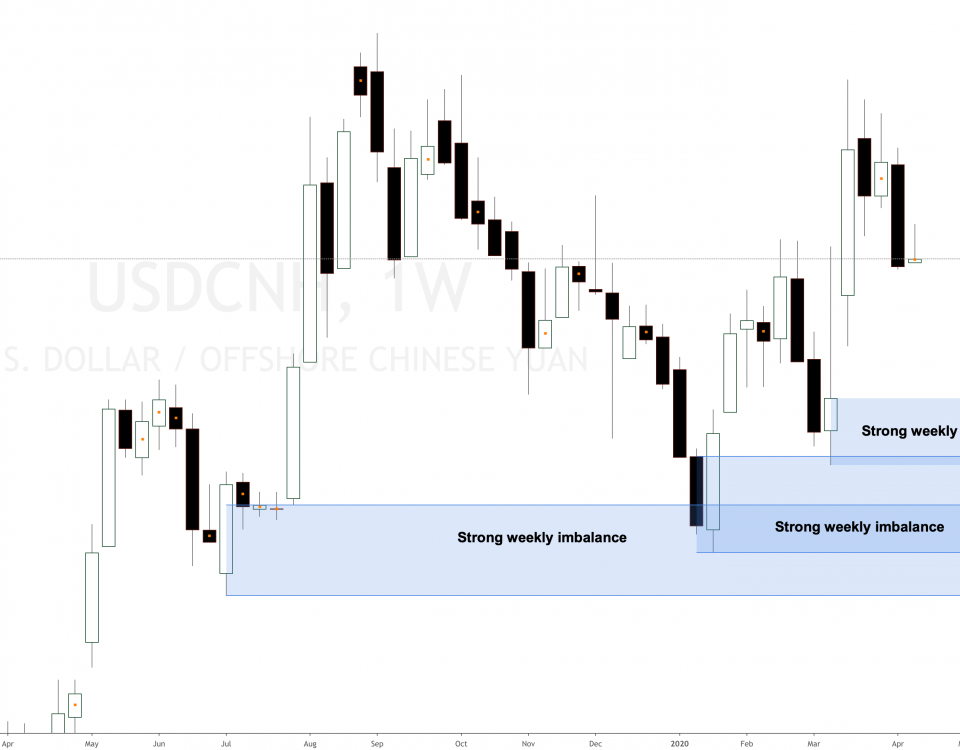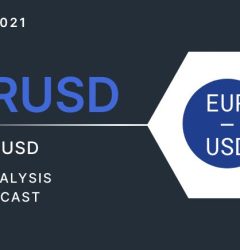16 Apr

The official currency in China is the renminbi, often abbreviated to RMB, while the term Yuan can be used to describe the base unit of the Chinese currency. When trading onshore, it is referred to as CNY, while offshore trading is known as CNH.
USD CNH Chinese Yuan offshore forecast
This supply and demand analysis is done on USDCNH Chinese Yuan offshore. We’ve been following this Forex cross-pair closely for the last few weeks. We’ve seen how weekly demand imbalances were created and respected over the last months in a clear, big-picture, long-term bullish trend.
The US dollar is very strong against the Chinese Yuan offshore currency pair, so the last two weekly demand imbalances around 6.91 and 6.87 have been respected. There is a brand-new imbalance slightly higher around the 6.95 price level. Will this new imbalance be respected like the previous ones? We do not know, but we do know that it’s a strong imbalance in a clear trend.
USD CNH chart price analysis

I’ve been reading that while the receding risk of the coronavirus (COVID-19) in China seems to weigh on the pair, the recent surge in the US virus numbers keeps the buyers hopeful. It should, however, be noted that the market has remained less active due to the Easter Monday holidays in major economies, except in Japan and China.
We should not care about COVID-19 or any news event; we know that there is a clear uptrend and demand imbalances are being created and respected. That’s all we need to know as Forex supply and demand traders.
USD/CNH price action analysis
This is the kind of price action technical analysis you will learn in our trading community. You will learn how to locate new supply and demand imbalances and trade without using any indicators, no news, no fundamental analysis, no earnings announcements, no volume or VSA analysis. Just supply and demand imbalances.
Trading supply and demand imbalances are ideal for beginners and those with full or half-time jobs. You won’t need to stay in front of the computer all day long trying to move price action with your mind.
Chinese coin supply and demand imbalances
As supply and demand traders, we do not need to pay attention to the news, fundamentals or any earnings reports. Once a big timeframe imbalance has gained control, earnings do just the opposite and react strongly to those imbalances. Why do you see positive earnings and then the underlying stock drops like a rock, or a negative earnings announcement and the stock rallies like a rocket out of control? You are probably missing the fact that there are big imbalances in gaining control.
You should not worry about fundamentals or earnings announcements unless you are doing very short-term trading and scalping.
You can use these imbalances to plan your trades in lower timeframes. Trading is just waiting for the right trigger points and scenarios to present themselves, this game has got a name, and it’s called the waiting game. We need to patiently wait for the correct scenarios and setups to happen and wait for the price to pull back or dip into the price levels we want to trade, in our case these price levels are made of supply and demand imbalances.
Join our supply and demand Forex trading course if you want to learn how to trade using our supply and demand trading strategy.









